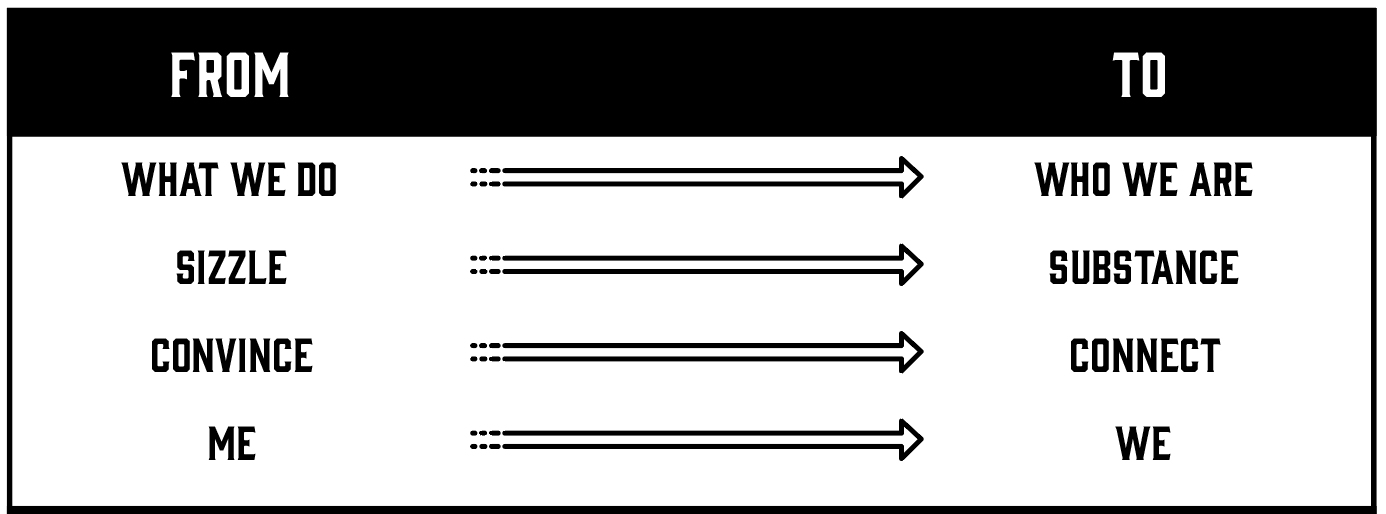Since its inception in the 1950s, companies have relied on branding to cut through the clutter of choices by building emotional connections between the qualities of their products and services and the motivations of their audiences.
When done well, branding creates a competitive advantage by building relationships that people trust. However, three emerging trends in today’s complex marketplace present new challenges to influencing the choices people make about who to buy from, work for, and invest in. These shifts include the hyper-connection of people forged by technology, the growing skepticism of the formal communications pushed out by organizations, and the shifting expectations about the responsibility of business.
Successfully responding to these shifts is critical to creating the trust that organizations need to compete. For branding to continue to be the economic engine it has been for over 70 years, we need to answer this question: What is the next evolution of branding?
The next evolution
The marketplace has shifted. Gone are the days when organizations could hide behind official statements prepared by marketing and public relations departments, or behind the glitz and glamour of ad campaigns. In today’s world of conscious consumers, the need to address the increased connectivity and growing skepticism in the marketplace has resulted in leaders seeking a better, more transparent, and more responsible way to do business.
While the underlying principles of identification that first gave birth to branding remain as powerful as ever, the world demands a new approach. Today’s marketplace calls on leaders to reframe the role of branding from a one-dimensional, externally-focused effort that tends to prioritize sizzle more than substance to an approach that manages everything an organization says and does.
The need to belong — to matter — is hardwired into our human psyche. Branding holds the power to create these deep connections with people. In the 1950s, advertising experts used this understanding of the psychology of identification to excel at mining the desires of people. They leveraged branding to connect people with products that confirmed membership in a group that was sexier, richer, or even a little smarter than the next group. While these more superficial human motivations have not disappeared from the scene, today an increasing number of people are making choices that reflect a desire to connect with companies, products, and services that represent a set of values. These values are perhaps a little more substantive and impactful and are increasingly associated with social and environmental responsibility.
Branding, reimagined
While many leaders understand the shift, they struggle with how to build brands that reflect these values. Caution is wise. Transparency, authenticity, and trust have become the holy trinity of successful branding. This requires elevating the function of branding beyond logos and external campaigns to an approach to managing the whole organization’s brand ecosystem (identity, image, culture, and vision), thus ensuring the talk and walk of the organization are aligned.
My new book, The Next Evolution of Branding, offers four shifts in how we think about branding to ensure it remains the economic engine it has been for decades.

Shifting the focus from what we do to who we are speaks to the importance of everyone in the organization feeling connected to a company’s core purpose, values, and beliefs. From sizzle to substance reflects the importance of operating with integrity and authenticity by aligning behaviors with the organization’s values, as well as with the people it serves. Movement from convincing to connecting symbolizes the importance of resisting spin in favor of engaging people in honest, meaningful communications.
The final shift from me to we acknowledges that organizations are part of a bigger picture, thus reinforcing the realization that every company has an impact on customers, employees, and the world. Each person, and therefore each organization, has a choice to decide if that impact will be positive or negative. The movement from me to we also accepts that branding is not the domain of the C-suite or of any single department. Your brand is the co-creation of every person who interacts with your company—directly or indirectly.
I propose the provocative proposition that the often-maligned practice of branding can be reimagined as a force for aligning purpose, performance, and perception. Thus, it can become a force for engaging people in building organizations that are prosperous because they are both profitable and purposeful. It’s a win-win for the bottom line — and for the world we leave to our grandchildren.




